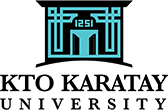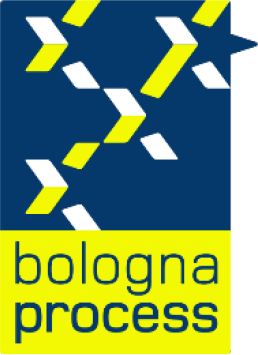Medical Imaging Techniques
Course Details

KTO KARATAY UNIVERSITY
Vocational School of Medical Services
Programme of Medical Imaging Techniques
Course Details
Vocational School of Medical Services
Programme of Medical Imaging Techniques
Course Details

| Course Code | Course Name | Year | Period | Semester | T+A+L | Credit | ECTS |
|---|---|---|---|---|---|---|---|
| 99400002 | Physiology | 1 | Autumn | 1 | 2+0+0 | 4 | 4 |
| Course Type | Compulsory |
| Course Cycle | Associate (Short Cycle) (TQF-HE: Level 5 / QF-EHEA: Short Cycle / EQF-LLL: Level 5) |
| Course Language | Turkish |
| Methods and Techniques | - |
| Mode of Delivery | Face to Face |
| Prerequisites | - |
| Coordinator | - |
| Instructor(s) | Asst. Prof. Mustafa Savaş TORLAK |
| Instructor Assistant(s) | - |
Course Content
Cell and general physiology, musculoskeletal physiology, blood physiology, heart and circulatory system, physiology respiratory system physiology, excretory system physiology, digestive system physiology , reproductive and endocrine system physiology, nervous system physiology.
Objectives of the Course
The normal physiology of the body integrated on the basis of organs and systems in the human body is to be defined.
Contribution of the Course to Field Teaching
| Basic Vocational Courses | X |
| Specialization / Field Courses | |
| Support Courses | X |
| Transferable Skills Courses | |
| Humanities, Communication and Management Skills Courses |
Relationships between Course Learning Outcomes and Program Outcomes
| Relationship Levels | ||||
| Lowest | Low | Medium | High | Highest |
| 1 | 2 | 3 | 4 | 5 |
| # | Program Learning Outcomes | Level |
|---|---|---|
| P2 | Has knowledge of general medical terms, first aid issues related to anatomical and physiological issues related to the field of health, and uses applied knowledge. | 5 |
Course Learning Outcomes
| Upon the successful completion of this course, students will be able to: | |||
|---|---|---|---|
| No | Learning Outcomes | Outcome Relationship | Measurement Method ** |
| O1 | Ability to express basic theoretical knowledge about the field of health. | P.2.1 | 1 |
| O2 | Ability to understand the basic principles related to the field of health. | P.2.2 | 1 |
| O3 | Ability to integrate basic theoretical knowledge about health into the field of medical imaging techniques | P.2.3 | 1 |
| O4 | Ability to distinguish the basic elements of theoretical knowledge related to the field of health. | P.2.4 | 1 |
| O5 | Ability to develop strategies in the field of medical imaging techniques by combining basic theoretical and practical knowledge about the field of health. | P.2.5 | 1 |
| O6 | Making suggestions for improvements in the field of medical imaging techniques by using basic theoretical and practical knowledge about the field of health. | P.2.6 | 1 |
| ** Written Exam: 1, Oral Exam: 2, Homework: 3, Lab./Exam: 4, Seminar/Presentation: 5, Term Paper: 6, Application: 7 | |||
Weekly Detailed Course Contents
| Week | Topics |
|---|---|
| 1 | Introduction to physiology |
| 2 | Introduction to physiology |
| 3 | Metabolism |
| 4 | Muscle physiology |
| 5 | Muscle physiology |
| 6 | Nerve physiology |
| 7 | Nerve physiology |
| 8 | Circulatory physiology |
| 9 | Midterm test |
| 10 | Hormones |
| 11 | Respiratory physiology |
| 12 | Excretory System physiology |
| 13 | Digestive physiology |
| 14 | Reproductive physiology |
Textbook or Material
| Resources | Aktümsek, A. (2009). Anatomi ve Fizyoloji, Nobel Yayın Dağıtım, Ankara. |
| Arthur C. Guyton and John E. Hall; Physiology of the Human Body (Paperback) by Arthur C. Guyton | |
| Ders Notları | |
| Halis Köylü- Tıbbi Fizyoloji | |
| Tıbbi Fizyoloji kitabı, Guyton & Hall, 19. ed. Textbook of Medical Physiology: (Textbook of Medical Physiology) |
Evaluation Method and Passing Criteria
| In-Term Studies | Quantity | Percentage |
|---|---|---|
| Attendance | - | - |
| Laboratory | - | - |
| Practice | - | - |
| Field Study | - | - |
| Course Specific Internship (If Any) | - | - |
| Homework | - | - |
| Presentation | - | - |
| Projects | - | - |
| Seminar | - | - |
| Quiz | - | - |
| Listening | - | - |
| Midterms | 1 | 40 (%) |
| Final Exam | 1 | 60 (%) |
| Total | 100 (%) | |
ECTS / Working Load Table
| Quantity | Duration | Total Work Load | |
|---|---|---|---|
| Course Week Number and Time | 14 | 2 | 28 |
| Out-of-Class Study Time (Pre-study, Library, Reinforcement) | 14 | 4 | 56 |
| Midterms | 1 | 16 | 16 |
| Quiz | 0 | 0 | 0 |
| Homework | 0 | 0 | 0 |
| Practice | 0 | 0 | 0 |
| Laboratory | 0 | 0 | 0 |
| Project | 0 | 0 | 0 |
| Workshop | 0 | 0 | 0 |
| Presentation/Seminar Preparation | 0 | 0 | 0 |
| Fieldwork | 0 | 0 | 0 |
| Final Exam | 1 | 20 | 20 |
| Other | 0 | 0 | 0 |
| Total Work Load: | 120 | ||
| Total Work Load / 30 | 4 | ||
| Course ECTS Credits: | 4 | ||
Course - Learning Outcomes Matrix
| Relationship Levels | ||||
| Lowest | Low | Medium | High | Highest |
| 1 | 2 | 3 | 4 | 5 |
| # | Learning Outcomes | P2 |
|---|---|---|
| O1 | Ability to express basic theoretical knowledge about the field of health. | 5 |
| O2 | Ability to understand the basic principles related to the field of health. | 5 |
| O3 | Ability to integrate basic theoretical knowledge about health into the field of medical imaging techniques | 3 |
| O4 | Ability to distinguish the basic elements of theoretical knowledge related to the field of health. | 3 |
| O5 | Ability to develop strategies in the field of medical imaging techniques by combining basic theoretical and practical knowledge about the field of health. | 3 |
| O6 | Making suggestions for improvements in the field of medical imaging techniques by using basic theoretical and practical knowledge about the field of health. | 3 |
